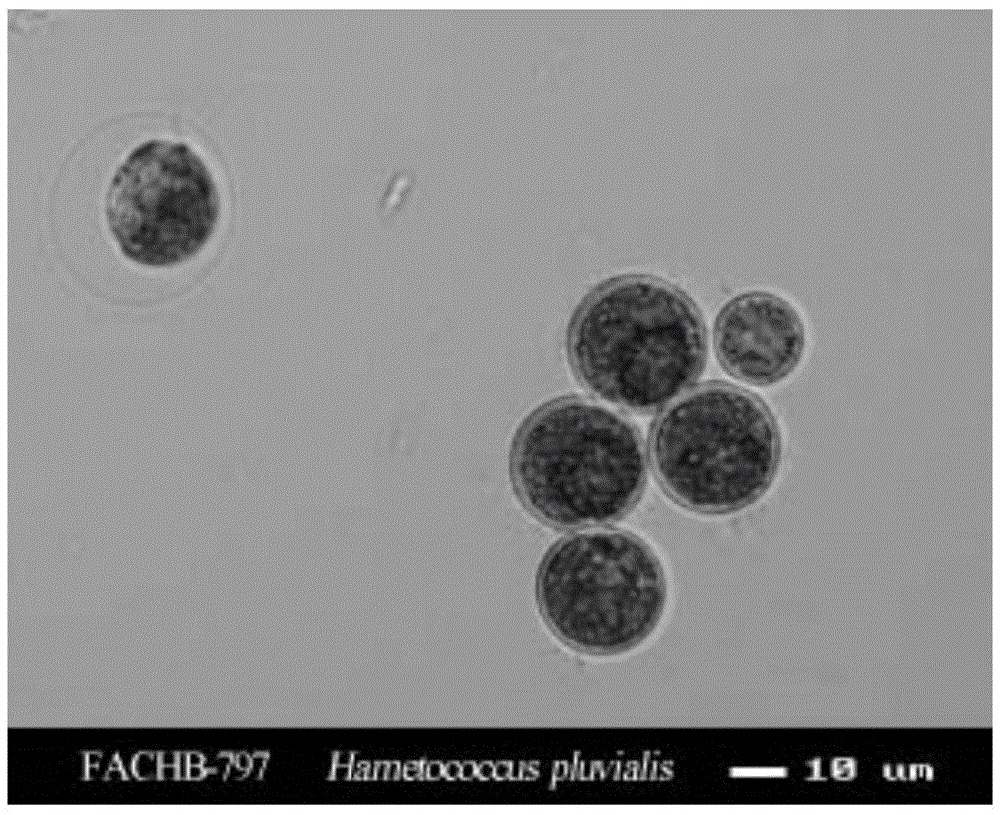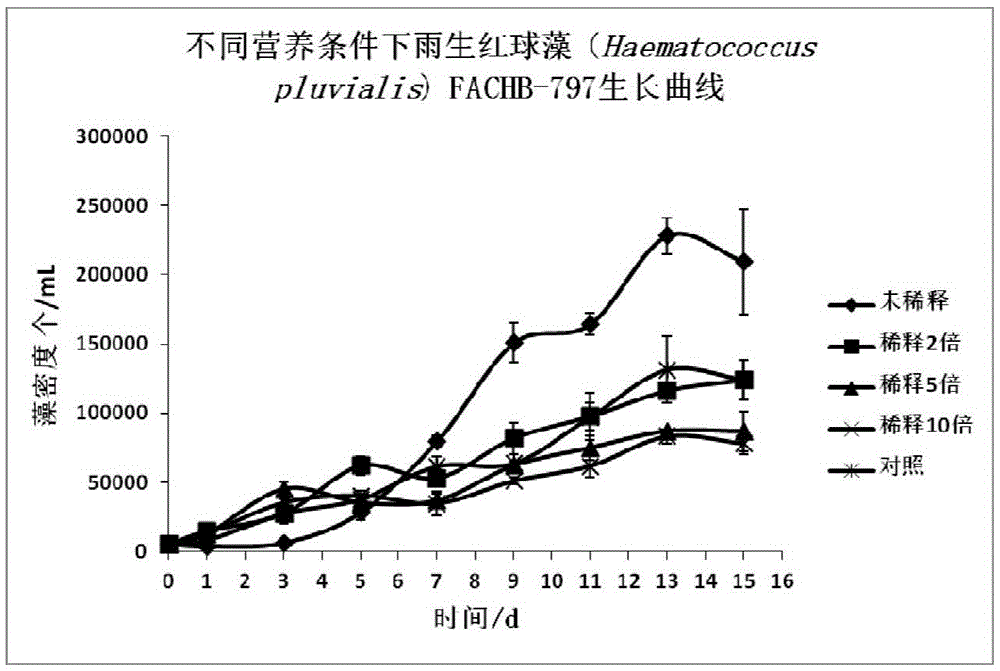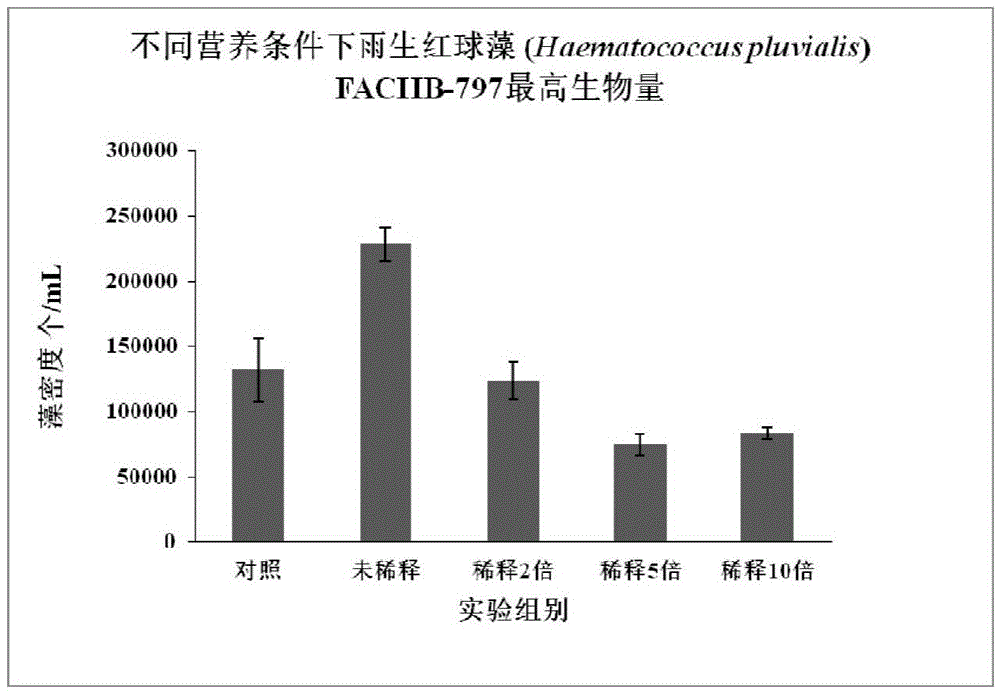Method for culturing haematococcus pluvialis and application of haematococcus pluvialis
A technology of Haematococcus pluvialis and culture medium, which is applied in the field of microorganisms, can solve the problem that the cost performance is not optimal, and achieve the effects of reducing nitrogen and phosphorus, good development prospects and increasing biomass.
- Summary
- Abstract
- Description
- Claims
- Application Information
AI Technical Summary
Problems solved by technology
Method used
Image
Examples
Embodiment 1
[0046] The sewage is taken from the aerated grit chamber of Xili Reclaimed Water Plant of Shenzhen Water Group, Nanshan District, Shenzhen City, Guangdong Province.
[0047] After the water sample was brought back to the laboratory, it was left to settle to settle impurities and large particles in the water; then it was filtered with a filter membrane with a pore size of 10 μm to remove fine particle impurities and plankton; finally, it was sterilized at 121°C and 0.1MPa for 15 minutes at high temperature .
[0048] The nitrogen and phosphorus content and total nitrogen and total phosphorus content of the sewage treated before cultivation were determined by automatic intermittent chemical analyzers (AutoDiscrete Analyzers, DeChem-TechCleverchem 380, Germany). Determination results are as follows: ammonia nitrogen (NH 4 + )8.6767mg / L, nitrous nitrogen (NO 2 - )0.0063mg / L, nitrate nitrogen (NO 3 - ) 0.0421mg / L, phosphate (PO 4 3- ) 0.983mg / L, total nitrogen (TN) 14.2643m...
Embodiment 2
[0050] 1. The cultivation of algae cells under different nutritional conditions
[0051] The algal species used in the experiment was Haematococcus pluvialis, the initial inoculation density was 5000 / mL, and they were divided into 15 250mL conical flasks (150mL for each bottle). groups of 3 in parallel.
[0052] The cultivation conditions of the algae are as follows: the temperature is 25±1° C., the light time L:D=12h:12h, and the light intensity is 3300±200 Lux. Shake once a day, and switch locations to ensure each receives the same amount of light.
[0053] The five experimental groups are as follows:
[0054] Control group: culture Haematococcus pluvialis with traditional BG11 culture medium;
[0055] Sewage undiluted group: the treated sewage was directly used as a culture medium to cultivate Haematococcus pluvialis;
[0056] Sewage diluted 2-fold group: the treated sewage was diluted 2-fold and used as a culture medium to cultivate Haematococcus pluvialis;
[0057] S...
PUM
| Property | Measurement | Unit |
|---|---|---|
| pore size | aaaaa | aaaaa |
Abstract
Description
Claims
Application Information
 Login to View More
Login to View More - R&D
- Intellectual Property
- Life Sciences
- Materials
- Tech Scout
- Unparalleled Data Quality
- Higher Quality Content
- 60% Fewer Hallucinations
Browse by: Latest US Patents, China's latest patents, Technical Efficacy Thesaurus, Application Domain, Technology Topic, Popular Technical Reports.
© 2025 PatSnap. All rights reserved.Legal|Privacy policy|Modern Slavery Act Transparency Statement|Sitemap|About US| Contact US: help@patsnap.com



